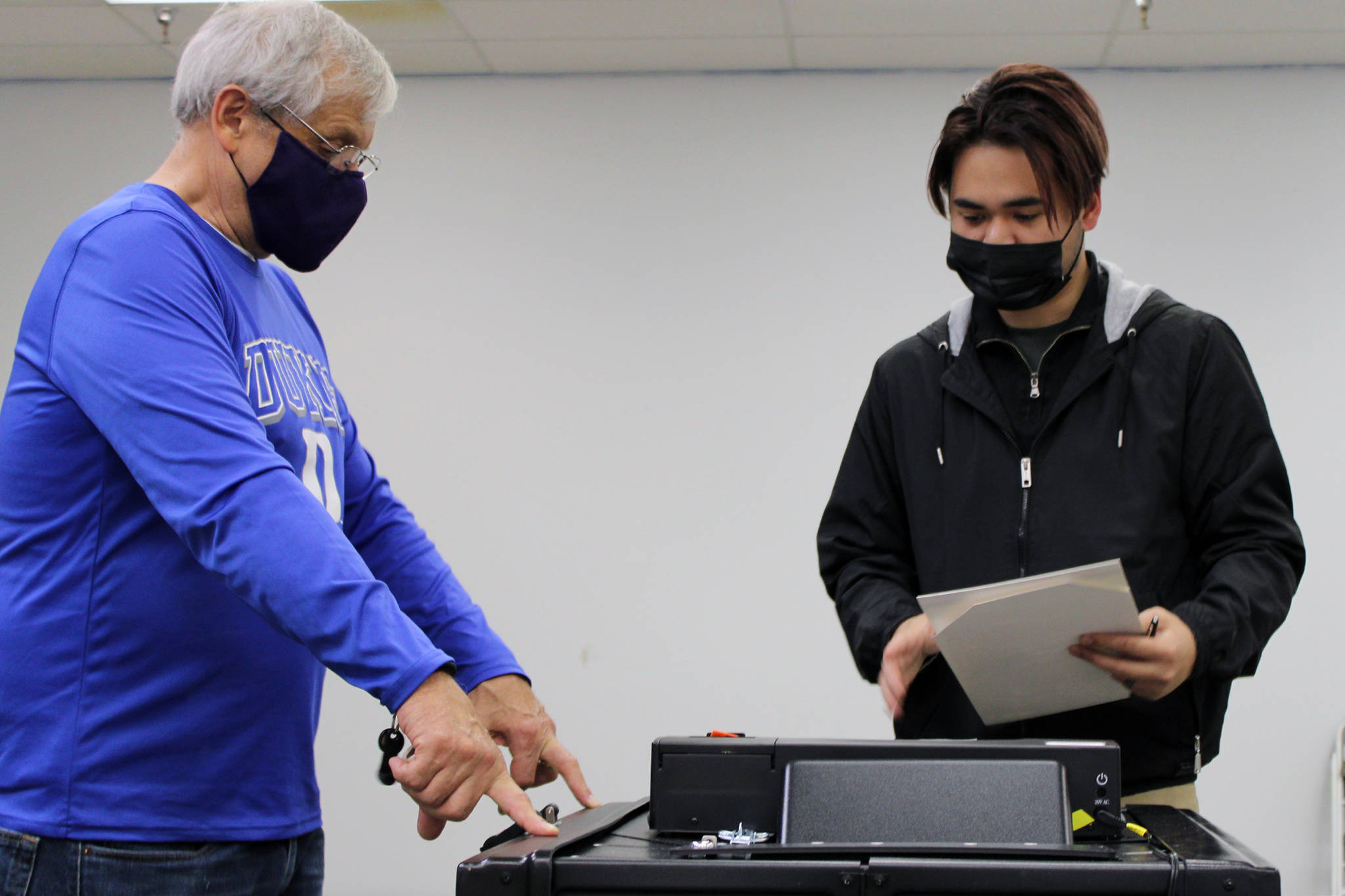Almost all of Alaska’s precincts are reporting results from Tuesday’s election, but with more than 110,000 ballots that won’t begin to be counted for another week, there are still no official winners in any of Alaska’s elections.
The Alaska Division of Elections previously told the Empire they expected by-mail ballots and absentee ballots, which don’t get counted until seven days after Election Day, will make up roughly 25% of this year’s total ballots. According to the latest preliminary results from DOE released Wednesday afternoon, 192,918 of Alaska’s 595,647 registered voters, or 32.39% have already had their ballots counted and all of Alaska’s 441 precincts had reported.
[Many races too close to call as Election Day closes]
Preliminary results show Alaska’s Republican incumbents Sen. Dan Sullivan and Rep. Don Young with healthy leads over their Democratic Party-endorsed independent challengers.
Initial returns counted election night and into Wednesday showed near-identical vote tallies — and advantages — for the Republicans in the statewide races: President Donald Trump, Sullivan and Young, the Associated Press reported.
Sullivan’s challenger Dr. Al Gross trailed Sullivan in the latest unofficial results 61,362 to 118,978 or 32.09% to 62.22%. Alyse Galvin, who in 2016 came within seven percentage points of Young, the closest of any challenger in decades, was trailing 69,674 to 119,999 or 36.61% to 63.04%, according to the latest results from DOE.
Southeast Alaska bucked the apparent statewide trend with Democrats and independents leading or in tight races with their Republican challengers.
Four incumbent Southeast state lawmakers ran for reelection this year, including Reps. Andi Story and Sara Hannan, both Juneau Democrats. Hannan ran unopposed and unofficial results show Story leading independent challenger Ed King.
Unofficial results showed Ketchikan independent Rep. Dan Ortiz ahead of his Republican challenger Leslie Becker by slightly fewer than 600 votes — 2,805-2,214 — and Rep. Johnathan Kreiss-Tomkins, a Sitka Democrat, trailed his GOP challenger Kenny Skaflestad but by fewer than 200 votes — 2,063-1,912.
Unofficial results showed both ballot measures — an oil tax and a package of election reforms — being voted down. Officials from both Yes campaigns told the Empire Tuesday night they expected more votes from mail-in voters.
For Measure 1, commonly called the “Fair Share Act,” which would raise taxes on Alaska’s most productive oil fields, no votes were leading 120,999 to 65,813 or 64.77% to 35.23% . For Measure 2, a sweeping election reform measure that would implement ranked-choice voting among other changes, no votes were ahead 105,161 to 81,048 or 56.47% to 43.53%.
DOE has stressed repeatedly on social media and in news releases that all results are unofficial until certified by state officials. Following the counting of the additional absentee ballots, results may shift greatly and candidates currently in the lead may not end up winning.
“Every eligible vote will be counted regardless of when or how it was cast. The election will not and cannot be called early or even the day after the election,” Tiffany Montemayor, public relations manager for DOE previously told the Empire.
According to DOE data, the state has already received 89,860 mail-in ballots and 16,318 absentee in-person ballots, both of which won’t be counted until Nov. 10. DOE hopes to have results certified by Nov. 25, Montemayor previously told the Empire.
• Contact reporter Peter Segall at psegall@juneauempire.com. Follow him on Twitter at @SegallJnuEmpire.

